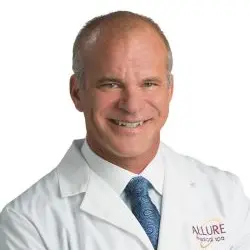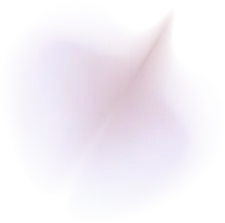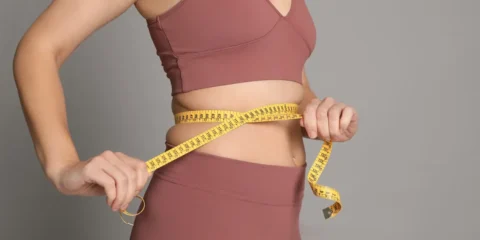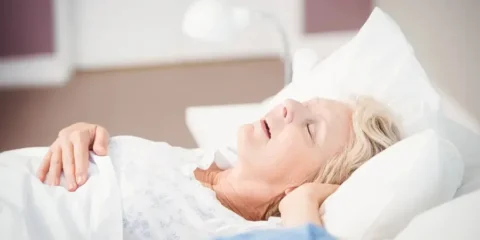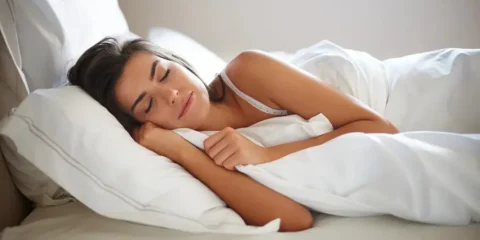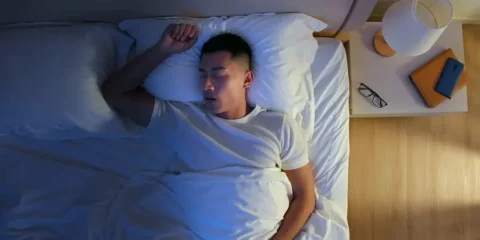What is Sleep Apnea?
Sleep apnea is a fairly common disorder affecting approximately 20% of the adult population. Troublesome snoring is even more common. Apnea is measured with a sleep study and generally diagnosed at an apnea-hypopnea index (AHI) ≥5 (the higher the number the worse the apnea).
Untreated sleep apnea is associated with an increase in type II diabetes, heart attack, stroke, and a shortened lifespan according to Johns Hopkins University.
How to Treat Sleep Apnea with the NightLase® Laser
Until now, the treatments were limited to oral appliances, wearable devices to assist breathing (CPAP for example), and surgical tissue removal or jaw bone manipulation, and an implantable nerve stimulation device.
NightLase® is a laser treatment that applies energy in a precise way to cause tissues to shrink and contract, opening up the airway. It is an in-office procedure with no anesthesia needed, and no pain medications required.
NightLase® uses two wavelengths of laser to deep heat tissues to reverse the laxity of the airway by remodeling collagen, and a superficial laser to remodel the exposed tissues. The results are fairly quick, with an improvement in sleep, snoring, and apnea almost immediately. The mouth and throat feel dry for a few hours, but there is no downtime, no bleeding, and no special aftercare needed.
How Does NightLase® Help with Snoring?
For mild to moderate snoring, generally, a couple of treatments are done about 2 weeks apart. For individuals with sleep apnea, a minimum of three treatments are recommended.
Results vary based on the degree of snoring or apnea, as well as individual tissue response. More treatments lead to more reduction of snoring and or sleep apnea.
Snoring severity is typically reduced by over 50% after two treatments. People with mild to severe sleep apnea had an average of 66% reduction in severity after three laser sessions. More sessions can be performed to get even better results.
Additional treatments may be chosen to get even better results for people with more severe diseases, and they are done approximately every 2 weeks. The duration of effect is not well established. Studies have followed individuals for up to three years with sustained results, but it isn’t like we stop aging, so periodic tune-ups for result maintenance are a simple option.
Patient Experience with Sleep Apnea and NightLase®
Case Report: Mark is a 60-something male employee of Allure who has been paying more attention to his health recently. One of the things he discovered in working with Dr. Joel Kahn, is that he had obstructive sleep apnea. He didn’t realize it and felt he had been a good sleeper.
On November 5th, 2021, he had a sleep study that showed he had moderate to severe sleep apnea, and several episodes of oxygen desaturation. Oxygen desaturation means his brain and organs were not getting enough oxygen because of his apnea, and this accelerates organ aging.

In the graph above, AHI is 26.7 in November 2021 before NightLase® treatments. Mark underwent 4 NightLase® treatments and repeated the sleep study on April 24, 2022.
In the graph above, AHI is 26.7 in November 2021 before NightLase® treatments.
Mark underwent 4 NightLase® treatments and repeated the sleep study on April 24, 2022.

The graph above is after four sessions, and the sleep apnea is almost gone (under 5 is considered essentially normal). In his follow-up study, there were no oxygen desaturations which is a major improvement. He is planning to do one to three more sessions until the apnea is resolved.
Mark noted that he never had a sleeping issue, but now he wakes up fully rested before his alarm goes off, whereas before treatment the snooze button was needed to wake up. In addition to getting more rest in less time, resolving sleep apnea promotes health and longevity.
NightLase® is offered at Allure Medical in Shelby Township and Livonia MI. The cost is $800 per session and it takes about 20 minutes. No specific preparation is required, but come well hydrated as the laser targets water in your tissues.

References:
“Obstructive sleep apnea is a common disorder in the population—a review on the epidemiology of sleep “apnea Thorac Dis. 2015 Aug; 7(8): 1311–1322. Franklin et al.
“Minimally Invasive Combined Nd:YAGand Er:YAG Laser-Assisted Uvulopalatoplasty for Treatment of Obstructive Sleep Apnea”. Photobiomodulation, Photomedicine, and Laser Surgery
Volume 39, Number 8, 2021 Shiffman et al
“ Er:YAG Laser Treatment of Sleep-Disordered Breathing” Journal of the Laser and Health Academy Vol. 2013, No. 2; Katarina Svahnström

